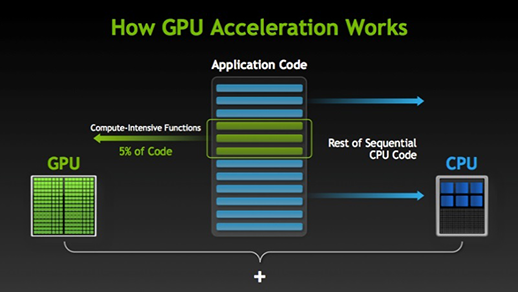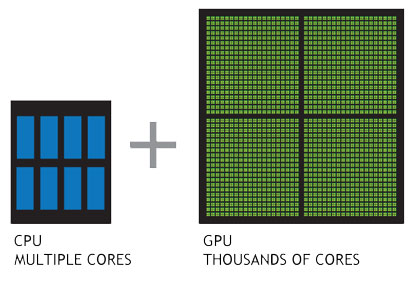WHAT IS GPU-ACCELERATED COMPUTING?
WHAT IS GPU-ACCELERATED COMPUTING?
GPU-accelerated computing is the use of a graphics processing unit (GPU) together with a CPU to accelerate deep learning, analytics, and engineering applications. Pioneered in 2007 by NVIDIA, GPU accelerators now power energy-efficient data centers in government labs, universities, enterprises, and small-and-medium businesses around the world. They play a huge role in accelerating applications in platforms ranging from artificial intelligence to cars, drones, and robots.
HOW GPUs ACCELERATE SOFTWARE APPLICATIONS
GPU-accelerated computing offloads compute-intensive portions of the application to the GPU, while the remainder of the code still runs on the CPU. From a user's perspective, applications simply run much faster.

GPU vs CPU Performance
A simple way to understand the difference between a GPU and a CPU is to compare how they process tasks. A CPU consists of a few cores optimized for sequential serial processing while a GPU has a massively parallel architecture consisting of thousands of smaller, more efficient cores designed for handling multiple tasks simultaneously.
GPUs have thousands of cores to process parallel workloads efficiently

Check out the video clip below for an entertaining GPU versus CPU
With over 400 HPC applications accelerated—including 9 out of top 10—all GPU users can experience dramatic throughput boost for their workloads. Find out if the applications you use are GPU-accelerated in our application catalog (PDF 1.9 MB).
GET STARTED TODAY
There are three basic approaches to adding GPU acceleration to your applications:
- Dropping in GPU-optimized libraries

No comments:
Post a Comment